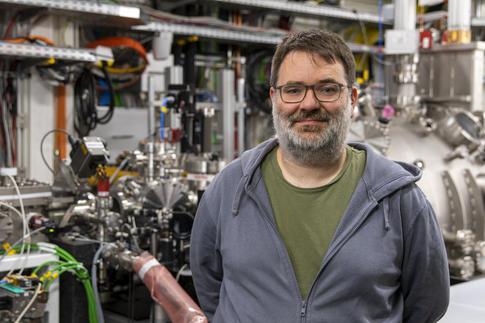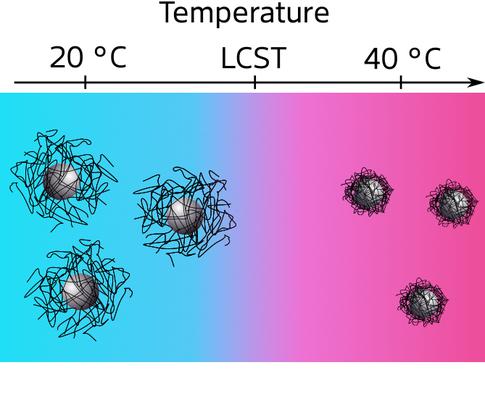XFEL: European XFEL elicits secrets from an important nanogel
European XFEL elicits secrets from an important nanogel
An international team at the world’s largest X-ray laser European XFEL at Schenefeld near Hamburg has scrutinised the properties of an important nanogel that is used in medicine to release drugs in a targeted and controlled manner at the desired location in a patient's body. The team now published the results in the journal Science Advances.

Felix Lehmkühler at the instrument MID (Materials Imaging & Dynamics) of European XFEL where the experiments were done. (© European XFEL)
PNIPAm is typically dissolved in water. Above a certain temperature, the so-called lower critical solution temperature (LCST), which is around 32 °C, it changes from a hydrophilic, water-loving state to a hydrophobic, water-repellent state. As consequence, nanogel particles, as investigated by Lehmkühler and co-workers, rapidly change their size above that temperature by expelling water.
This feature is useful for a variety of applications, including the controlled release of drugs in a patient's body, as a model system for proteins and in tissue engineering, the cultivation of organic tissue for medical applications, or as bio-compatible temperature sensors. However, it was very difficult so far to watch these rapid phase transitions experimentally, and therefore to optimize them for different applications. Therefore, the precise characterisation of the kinetics of the changes of the PNIPAm polymer with temperature is still a lively research topic.
Now, the fast sequence of X-ray pulses from the European XFEL enable researchers to investigate the rapid, temperature-dependent changes in the PNIPAm nanogel using a technique called X-ray Photon Correlation Spectroscopy (XPCS). “Due to the high repetition rate of the European XFEL, we can perform these measurements with high enough time resolution to follow the structure and motion of the nanogels”, says Johannes Möller, Instrument Scientist at the Materials Imaging and Dynamics (MID) instrument of European XFEL. The researchers studied particles of about 100 nanometre size, this is ten-millionths of a metre. The X-ray pulses were used both to heat the nanoparticles and to measure their structural changes via their dynamics, i.e. their movement in the surrounding water.

The team of researchers consisted of scientists from Deutsches Elektronen-Synchrotron (DESY), Germany, the University of Padua, Italy, The Hamburg Centre for Ultrafast Imaging, Germany, and, European X-Ray Free-Electron Laser Facility, Germany.
Original paper:
Real-time swelling-collapse kinetics of nanogels driven by XFEL pulses
https://www.science.org/doi/10.1126/sciadv.adm7876
DOI: 10.1126/sciadv.adm7876
More information, including a copy of the paper, can be found online at the Science Advances press package at https://www.eurekalert.org/press/vancepak
